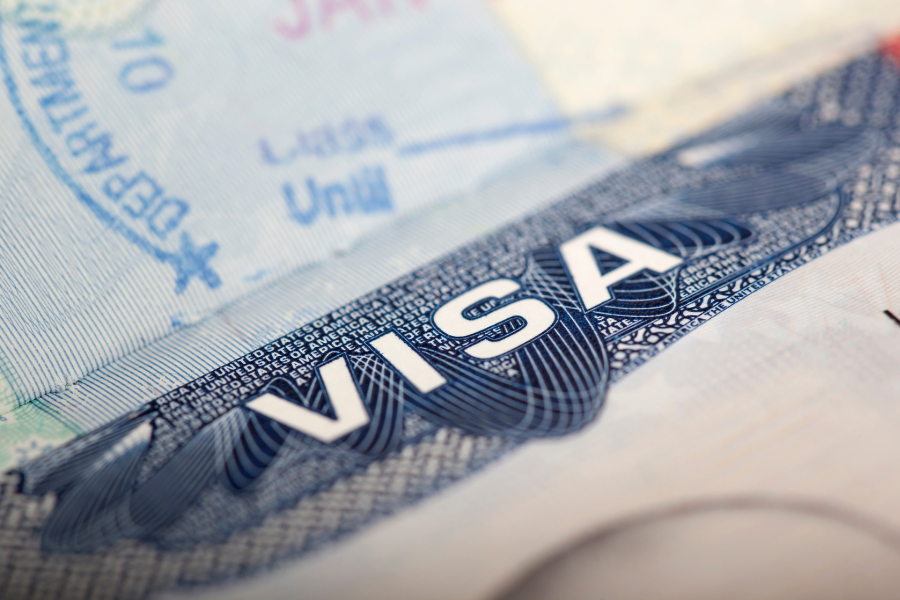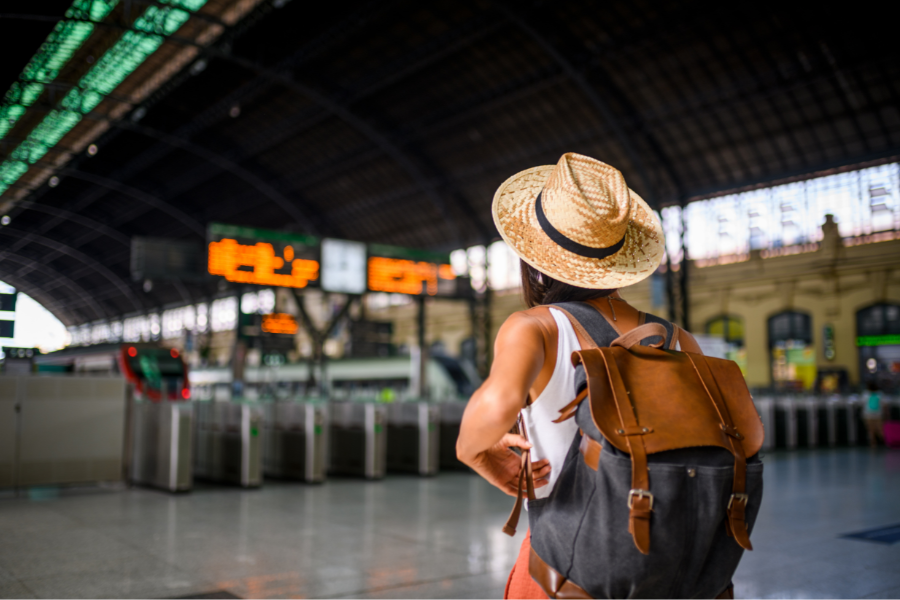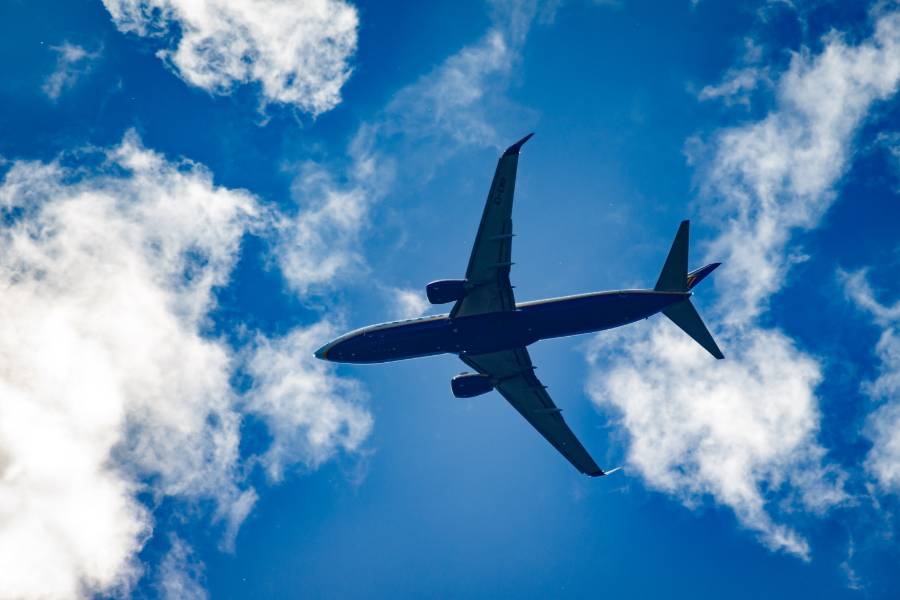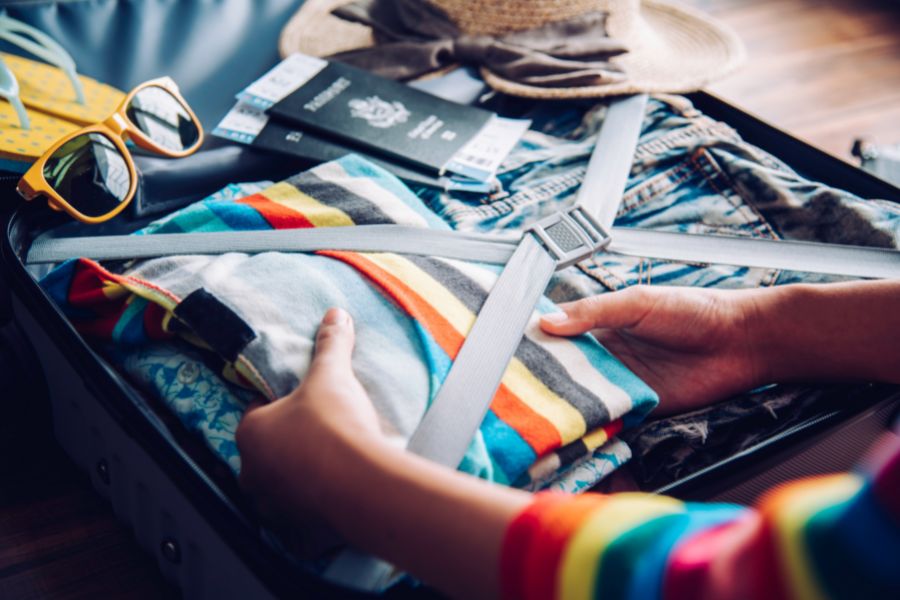You’ve heard of a digital nomad, but have you heard of a digital slomad?
If you’ve lived the digital nomad lifestyle for a while, you probably know that burnout is one of the most common complaints. After 3 years of full-time digital nomad life, I decided to slow down and start spending 3-12 months in each location.
In this article, we’ll explore the luxurious and freeing lifestyle of being a digital slomad. We’ll cover everything from the perks of slow travel and the differences between slomads and digital nomads to sustainable practices and the best visa options for full-time travelers.
So let’s get started on discovering the ins and outs of being a digital slomad!
Table of Contents
Toggle
What is a Digital Slomad?
A digital slomad is a digital nomad who travels at a much slower pace, staying in one spot for multiple months. They like to get to know their destination better, avoid the stress of fast-paced travel, and minimize their carbon footprint.
Staying in a destination longer also helps to avoid two of the most common digital nomad pitfalls: burnout and loneliness. You don’t burnout nearly as easily when only traveling every few months, and it gives you plenty of time to find a community and build relationships.
Digital Slomad vs Digital Nomad
In contrast to digital nomads, who are often viewed as traveling to a new place every 4-8 weeks, slomads like to take things at a much slower pace. According to Nomadlist, 79% of digital nomads stay in a city for less than 30 days, and 57% stay in a country for less than 30 days.
In my last 3 years of travel, I’ve averaged 6 months in each location. While I’ve had a few 30-day stays due to visas, I’ve also had some 7-9 month stays to offset them.
Slomads also tend to have a smaller carbon footprint. Frequently travel, especially by air, is inherently worse for the environment. A lot of environmentally conscious travelers tend to slow their travel down over time, thus joining the slomad crowd.
Advantages of Being a Digital Slomad
Slow travel is starting to become the new norm. Slomads don’t have to constantly be on the move, and can instead stay in one place for a while and really get to know the area and the culture. As a digital slomad, you can save money, have a deeper cultural immersion, build better relationships, and avoid the stress and burnout from frequent travel.
Most digital nomads fly from place to place every few months, and this can quickly add up. Slomads, on the other hand, can take their time and travel more slowly. This means fewer plane tickets, and more opportunities to take advantage of discounts and promotions. Plus, when you’re staying put for longer periods of time, you can often negotiate better deals on housing and transportation.
Another great perk of being a digital slomad is that it’s a great way to travel as a family. You don’t have to uproot your kids every few months, so they can really get to know the culture, make friends, and learn a new language. It’s a great way for them to be exposed to different cultures without having to make a huge lifestyle change. And, when you’re taking your time and exploring the area, you can really get to know the locals and the culture of the place you’re visiting.

How to Become a Digital Slomad
If you’re already a digital nomad, just slow down 🙂
If you aren’t yet a digital nomad, you’ll want to read our article on how to become a digital nomad.
It’s not as hard as it may seem. The hardest part is finding a job or source of income that allows you to work remotely, the rest is pretty easy. Once you have a reliable income source, you can start planning your journey.
Find a Location-Independent Job or Source of Income.
The first step to becoming a digital slomad is to find a job or source of income that doesn’t tie you down to one place. That’s not as hard as it sounds – there are plenty of options out there for folks who want to work remotely. For example, you could look into freelancing jobs, remote work, or even co-working spaces. You could also use your language skills to find work in a different country. Whatever you decide to do, make sure it’s something you can do from any location.
The key is to find a job or source of income that allows you to work remotely and maintain a one-location lifestyle. Of course, this comes with some sacrifices – the pay may not be as good as a regular job, and you’ll need to be prepared to work hard. But the upside is that you’ll have more freedom and richer cultural experiences.
Save Money
Saving money should be a top priority for anyone looking to become a digital slomad. After all, you’ll need a financial cushion if you want to travel without worrying about money. It’s recommended to have at least six months of expenses tucked away in a savings account before you embark on your digital nomad journey. This will give you the freedom to explore new places and cultures without having to worry about your finances.
Living in a cheaper country can also be a great way to save money. You’ll be spending a fraction of what you would back home, so it’s definitely worth doing your research to find the right place to stay. Of course, it’s not just about saving money – you’ll also get to experience a different culture, connect with locals, and enjoy the slower pace of life.
Pack
Packing for the digital lifestyle is all about finding the right balance between comfort, practicality, and affordability. It’s important to make sure you bring enough clothes for the climate you’ll be living in, as well as any items you may need for your job or recreational activities. You’ll also need a laptop and other tech devices to stay connected and do your work, and a notebook to record your ideas and experiences.
Beyond that, you’ll want to bring items that will make you feel comfortable, such as a meditation cushion, your favorite books, and other items that will be a reminder of home. The key is to pack light and only bring items that will make the journey more enjoyable. After all, you never know what you may come across during your journey that you’ll want to bring along!
Where to Put Your Things
The decision to sell or store your belongings when becoming a digital slomad is one of the most important steps in the process. Storing your stuff is a great option if you want to keep your belongings safe and out of the way until you’re ready to come back. You can rent a storage unit, or ask a family member to hold onto it for you.
The downside to renting a storage unit is that it can be quite expensive. You’ll have to factor in the cost of the unit itself as well as the cost of packing and moving everything. So, before you commit to this option, make sure you weigh the pros and cons to see if it’s the right move for you.
Rent Out Your House
When you become a Digital Slomad, renting out your house can be an effective way to generate some extra cash to help cover your travel costs. It might sound daunting, but it doesn’t have to be. With the right preparation and research, you can make it happen.
First, make sure your house is ready for renters. Clean it up, fix any damages, and make sure you have all the necessary safety features. You’ll also want to look into getting the right insurance coverage.
Next, set a competitive rent price and start looking for tenants online. Consider hiring a property manager if you’re overwhelmed with the process. Once you’ve got a tenant, you’re ready to become a Digital Slomad!
Get Your Visa and Go
Getting your visa is the final hurdle to becoming a Digital Slomad. Depending on the country you’re looking to move to, you may need to apply for a visa in person or online. Make sure you research the exact requirements for the visa you need, as they can vary from country to country. Some countries offer special visas for digital nomads, so make sure to look into those as well. Many countries also offer dual citizenship, which allows you to become a citizen of two countries at the same time.
You’ll also want to find out about the visa duration, as some visas may only be valid for a certain length of time. When you’ve got your visa, the last step is to visit the country you’re moving to and get settled in! With the right preparation and dedication, you can make the most of the digital lifestyle. Good luck!

Best Visas for Slomads
As digital slomads, it’s important to know what visas are available to you. Digital nomad visas are designed specifically for digital nomads, allowing them to stay in a particular country for a longer period of time than traditional visas. This is perfect for those who want to take their time and explore a country more deeply. With the pandemic, more countries are now offering digital nomad visas. Check out our list of Digital Nomad Visas to find out which countries offer them.
Having a digital nomad visa can be incredibly beneficial for digital slomads. These visas allow slomads to stay in a location for longer than a regular tourist visa, which is great if you want to take your time in one place. Plus, it gives you access to the same rights and privileges as other citizens in the country, so you can enjoy the same benefits as those living there permanently. This gives you the opportunity to really get to know the culture and the people, which is one of the major advantages of being a digital slomad.
If you don’t want to go through the hassle or commitment of getting a digital nomad visa, there are plenty of options for longer stays. Here are some popular slomad countries that offer visa-free stays of 3+ months for US citizens:
- Albania
- Bahamas
- Georgia
- Malaysia
- Mexico
- Panama
- Serbia
There are plenty of other countries and simple visa tricks to allow stays of 6+ months in countries though. Thailand and Vietnam are both full of slomads who do visa runs every 2-3 months. If you have a destination in mind, take some time to research your options for longer stays.

Tips for the Slomad Lifestyle
The Slomad lifestyle is a unique way of travel that allows digital nomads to slow down and experience a destination in a deeper, more meaningful way. It’s a lifestyle that emphasizes flexibility, exploration, and local culture. Here are some tips to get the most out of slow travel:
Negotiate for accommodation
Whether you’re booking an Airbnb for 3+ months or renting locally, negotiate for a lower rate based on how long you’re staying. Renting for 3-6 months rather than monthly can save you 10-20% on rent.
Find your community
Join the local Facebook groups, go to meetups and events, and build some relationships. Loneliness is one of the biggest complaints of the digital nomad lifestyle, and being a slomad gives you the change to build longer, more meaningful relationships.
Learn the language
There’s no expectation of becoming fluent in every language, but being able to say more than “hello” or “thank you” can lead to some fun and authentic interactions with the locals.
Understand the history and culture
The more time you spend in a place, the more you’ll understand the culture. Spend time learning about the history of your city or country, and read up on the local culture.
Go Back to the Same Places
One of the key elements of the Slomad lifestyle is going back to the same places. This allows digital nomads to build relationships with locals, get to know the local culture, and build a sense of familiarity and consistency. Plus, being able to go back to the same location means that upi can attend local events and traditions, and get to know the people who inhabit the place.
Summary
Becoming a slow traveler, or digital slomad, is becoming an increasingly popular way to make the digital nomad lifestyle more sustainable. It will allow you to have more meaningful travel experiences while avoiding many of the common pitfalls of digital nomadism.
Becoming a digital slomad is an amazing way to explore the world at your own pace while saving money, building better relationships, reducing your carbon footprint, and immerse yourself in each location.
There’s no wrong way to travel and some may find slow travel boring. For those who thrive from fast-paced travel, keep it up! However, if you find yourself burning out or feeling lonely from your nomad journey, try slowing it down a bit.
Frequently Asked Questions
What do digital nomads actually do?
Being a digital nomad is an exciting lifestyle that involves working remotely while exploring different places all the time. These remote workers use modern technology and communication tools to work from wherever they are, such as coworking spaces, cafes, or even their own home.
No matter where they go, digital nomads stay connected, productive, and fulfilled.
What is a Slowmad?
A slowmad is a digital nomad who takes their time to slowly explore different countries, usually with more extended stays in each place. It’s an alternative approach to living and traveling the world, allowing for deeper cultural understanding through meaningful connections and immersion.
Is it legal to be a digital nomad?
Generally, yes; it is legal to be a digital nomad. The key question is to make sure that you comply with the visa regulations of the countries you visit.
If done correctly, you should have no difficulty living and working as a digital nomad.
What is the difference between a nomad and a slomad?
A nomad is a person who regularly travels, while a slomad is someone who takes a slower approach to travel and spends significantly more time in one destination. Both digital nomads and slomads work online while traveling the world, but there is a clear difference in the duration of their travels.



